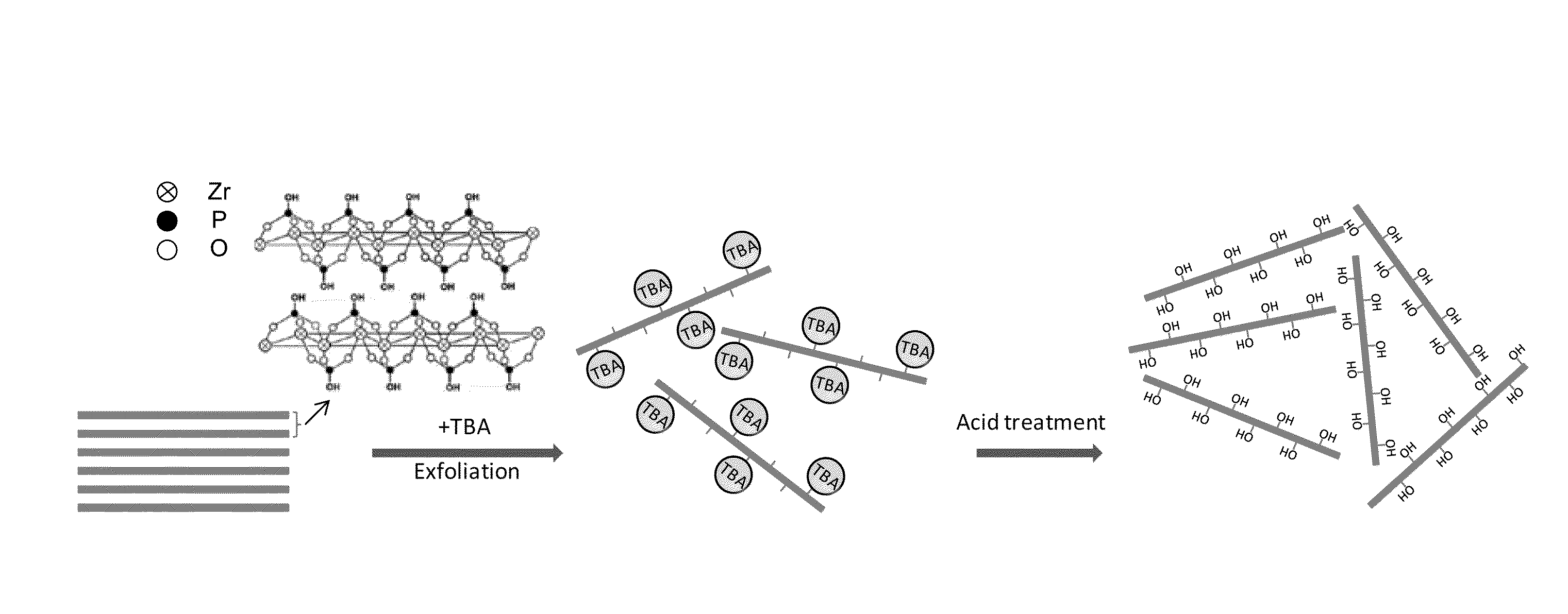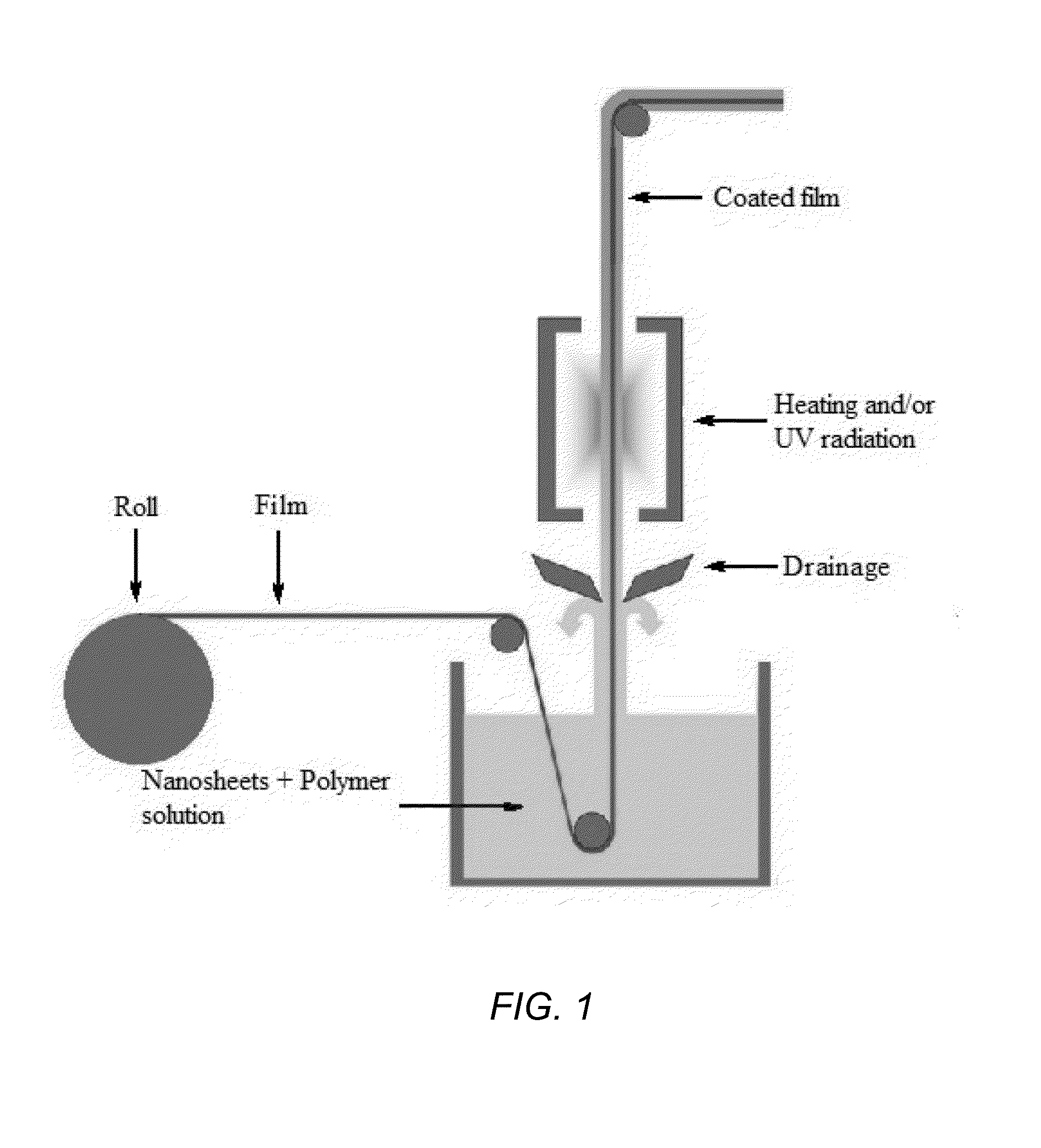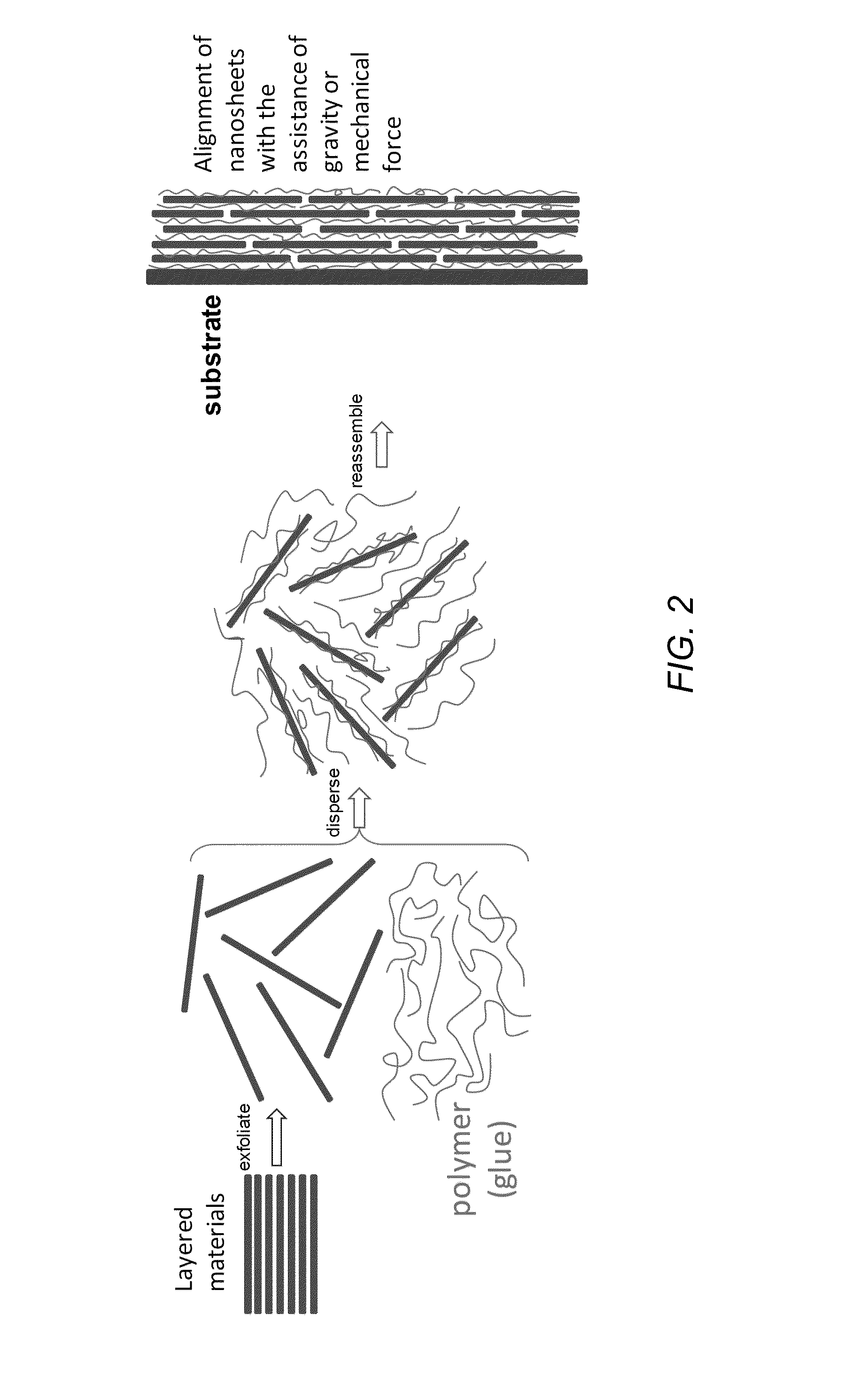Multi-functional high performance nanocoatings from a facile co-assembly process
a co-assembly process and nanocoating technology, applied in the direction of coatings, fireproof paints, liquid surface applicators, etc., can solve the problems of difficult to achieve, labor intensive and time-consuming process is not desirable in the industry, and conventional nanocomposite preparation process is difficult to achiev
- Summary
- Abstract
- Description
- Claims
- Application Information
AI Technical Summary
Benefits of technology
Problems solved by technology
Method used
Image
Examples
example 1
Polyvinyl Alcohol / α-Zirconium Phosphate (PVA / ZrP) Nanocoating
[0060]Layered ZrP micro-crystals were used to coat a substrate according to the process schematically illustrated in FIG. 3. Layered ZrP micro-crystals were completely exfoliated into individual nanosheets using tetra-n-butyl ammonium hydroxide or propyl amine. A subsequent acid treatment helped to recover the —OH groups on the nanosheet surface. The protonated ZrP nanosheets were collected by centrifugation, and re-dispersed in water with the help of ultrasonication. Depending on the specific application, the protonated ZrP nanosheets could also be dispersed into other solvents such as acetone, ethanol, tetrahydrofuran (THF), etc. The fully exfoliated ZrP nanosheets can be uniformly dispersed and well aligned in various polymer matrices. Significant property improvements have been achieved.
[0061]The exfoliated and protonated ZrP nanosheets were incorporated into a polyvinyl alcohol (PVA, Mowiol® 8-88 from Kuraray) aqueous...
example 2
Studies of Various MMT / PVA Coatings
[0063]In this example, nanosheets montmorillonite (MMT) were used to coat a PLA film according to the process schematically illustrated in FIG. 2. PLA is used as the binder and water as the solvent. Poly(vinyl alcohol) (PVA) (Mowiol® 8-88 from Kuraray), sodium montmorillonite (MMT) (Cloisite Na+, Southern Clay Products), glutaraldehyde (GA) (Aldrich Chemical Co. 50% w / w), and polylactic acid (PLA) bi-axially oriented films (from BI-AX International Inc.) were used as received.
[0064]A sample of PVA was pre-dissolved in de-ionized (DI) water, and a sample of MMT was pre-exfoliated in DI water to form a suspension, which was stirred for 1 hour and ultra-sonicated for another 1 hour to promote the exfoliation. The PVA solution was then added into the MMT / water suspension during stirring to form a 1.50 wt % suspension (based on the total mass of MMT and PVA). This concentration can be adjusted from 0.0001 to 60 wt % for different applications and depend...
PUM
| Property | Measurement | Unit |
|---|---|---|
| thickness | aaaaa | aaaaa |
| thickness | aaaaa | aaaaa |
| composition | aaaaa | aaaaa |
Abstract
Description
Claims
Application Information
 Login to View More
Login to View More - R&D
- Intellectual Property
- Life Sciences
- Materials
- Tech Scout
- Unparalleled Data Quality
- Higher Quality Content
- 60% Fewer Hallucinations
Browse by: Latest US Patents, China's latest patents, Technical Efficacy Thesaurus, Application Domain, Technology Topic, Popular Technical Reports.
© 2025 PatSnap. All rights reserved.Legal|Privacy policy|Modern Slavery Act Transparency Statement|Sitemap|About US| Contact US: help@patsnap.com



